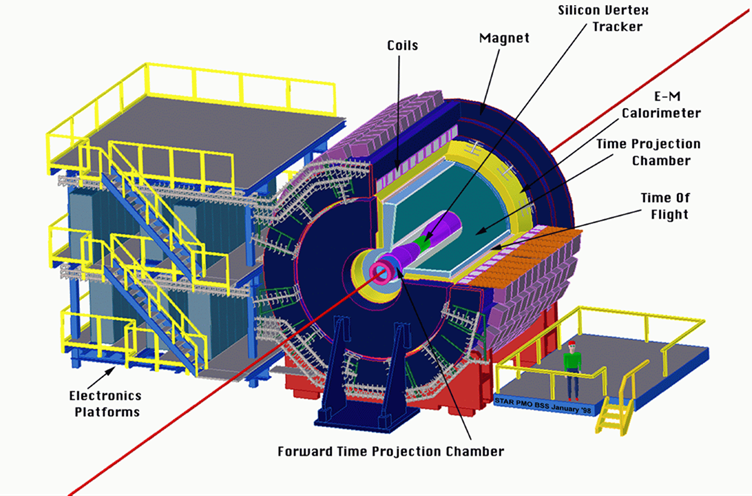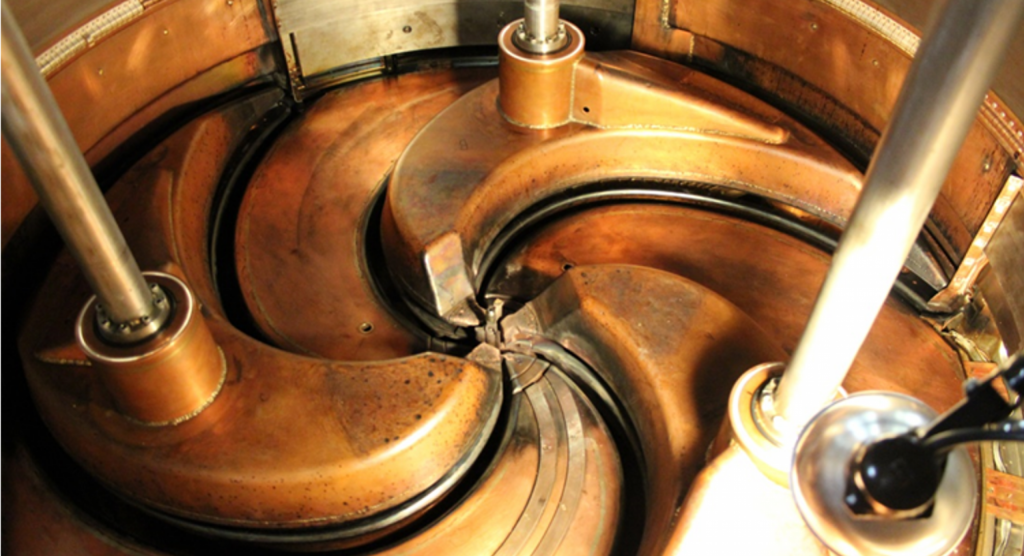A number of research projects involving Institute scientists are carried out at other large national and international accelerator facilities in collaboration with groups from other universities and laboratories worldwide. Many of these are directly complementary to the local experimental program but others, as described below, explore other frontiers.
Cyclotron Institute scientists carry out research within the STAR collaboration at the Relativistic Heavy Ion Collider (RHIC) at Brookhaven National Laboratory. In collisions of ultra-relativistic heavy-ion beams at RHIC at center-of-mass energies up to 200 GeV/nucleon pair, ordinary nuclear matter undergoes a phase transition to a quark-gluon plasma (QGP), a new state of matter that existed microseconds after the Big Bang. RHIC and the Large Hadron Collider (LHC) are the two premier facilities world-wide for investigations of the QGP. RHIC is also the world’s only polarized hadron collider, which provides a unique window to observe the partonic origin of the proton spin.
The Texas A&M group in STAR focuses on measurements involving jet production in proton-proton and heavy ion collisions. Jets are collimated sprays of particles that arise when an energetic quark or gluon fragments and hadronizes. Jet yields and modifications in heavy-ion collisions are excellent probes of the interactions of energetic partons with the QGP, with gamma-jet coincidences considered the “golden channel” to investigate quark energy loss. The TAMU group plays a leading role in STAR measurements of gamma-jet and π0-jet coincidences in Au+Au collisions. Results have demonstrated that jet energy is transported radially outward from the jet axis when energetic partons traverse the QGP. However, in contrast to jets at the LHC, at RHIC energies most of the jet energy is recovered when a large jet radius is used. Very similar modifications are seen in gamma-jet and π0-jet processes, indicating that interactions of energetic quarks and gluons in the hot dense medium are surprisingly similar.
The proton has a rich substructure including three valence quarks, the gluons that bind them together, and a “sea” of additional quark-antiquark pairs. Although the naive quark model predicts that the valence quarks provide the spin angular momentum of the proton, detailed experiments have shown that the quarks only contribute about 30%. To resolve this puzzle, the TAMU group played a leading role in a sequence of STAR spin asymmetry measurements involving jets that are sensitive to the polarization of gluons within the proton. The results demonstrate that the spins of gluons which carry 5% or more of the proton momentum contribute approximately 40% of the proton spin angular momentum. The TAMU group also plays a leading role in STAR measurements that probe the transverse polarization of quarks in a transversely polarized proton together with the dynamics that underlie the fragmentation and hadronization of energetic quarks.


